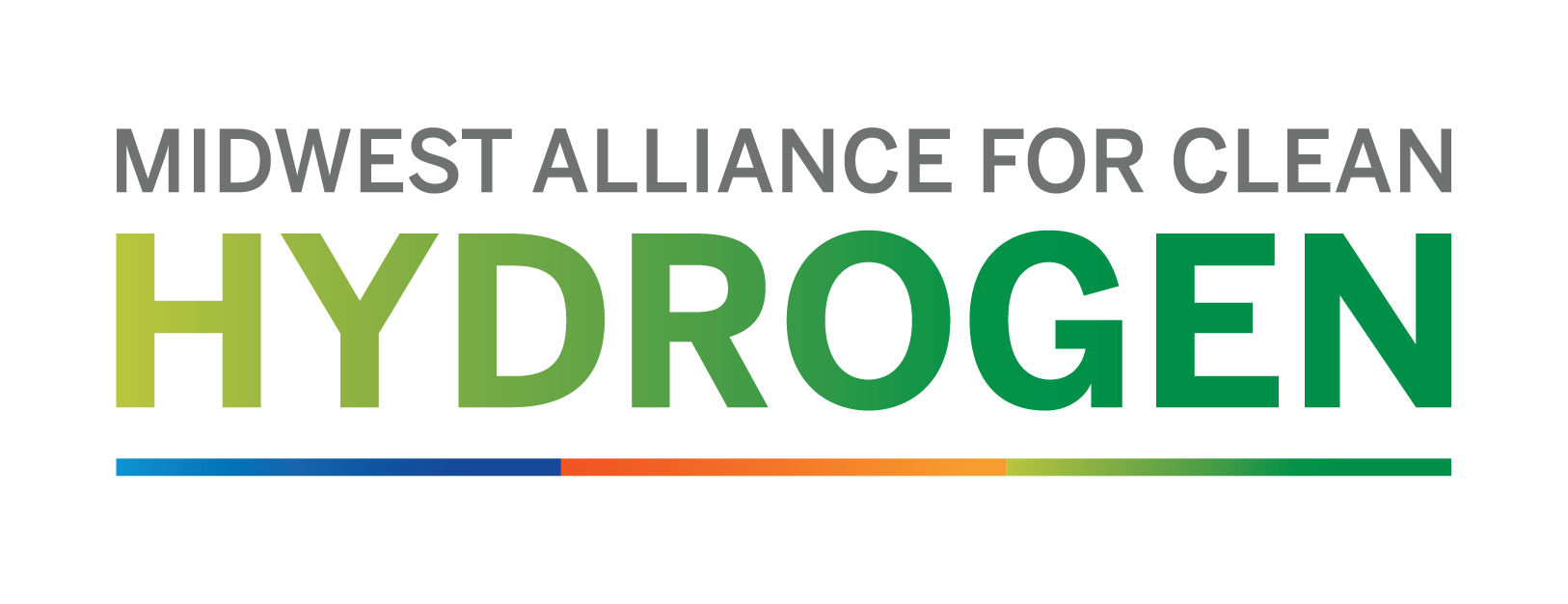FAQs
Midwest Alliance For Clean Hydrogen (and MachH2 is pronounced “Mach 2”)
MachH2 is a multi-state, Midwest coalition of more than 70 public and private entities focused on producing, delivering and consuming clean, carbon-free hydrogen in a variety of applications. The coalition represents every phase in the hydrogen value chain and includes a cross-section of carbon-free energy producers, clean energy developers, hydrogen technology providers, utilities, small businesses, major manufacturers, national labs, world-class universities, and leading hydrogen technology development and deployment institutions.
A list of publicly announced coalition members is viewable here: MachH2.com/partnerships/
Under the Infrastructure Investment and Jobs Act, the U.S. Department of Energy (DOE) will invest up to $8 billion in a national clean hydrogen network through regional hubs. The DOE will determine how this funding is allocated across the various hydrogen hubs. A hydrogen hub helps to mitigate the costs of transporting and storing hydrogen by focusing on locating the production and consumption of hydrogen as close as possible to each other.
MachH2 will become part of the DOE’s broader network of hydrogen producers, consumers, and local connective infrastructure, accelerating the use of hydrogen and delivering and storing tremendous amounts of clean energy (source: DOE.)
The DOE selected seven hydrogen hubs in October 2023, including MachH2. Please see our press release on this topic here.
The Midwest is an ideal fit for a regional hydrogen hub, bringing an unparalleled supply of clean energy in the form of both nuclear power and renewable resources, strong existing infrastructure, a highly skilled workforce, significant regional hydrogen demand, favorable geology and policy for carbon storage, and its location at the crossroads of America, with national hydrogen distribution and access to major freight routes primed for decarbonization.
Hundreds of companies in difficult-to-decarbonize industries, including aviation and long-haul trucking, also call the Midwest home, which represents a unique, long-term strategic opportunity for a Midwestern clean hydrogen hub.
MachH2’s hub will seek to maximize existing energy infrastructure throughout Illinois, Indiana, and Michigan. The alliance has proposed multiple potential options for siting hydrogen production facilities and related infrastructure. DOE’s decision will inform which projects will move forward.
To create carbon-free hydrogen, the hub will employ electrolysis technology to split the hydrogen and oxygen molecules in water.
MachH2 will use the rich diversity of existing and new clean generation resources including nuclear, renewables in IL and Michigan, and blue hydrogen utilizing carbon capture and sequestration.
Under the Infrastructure Investment and Jobs Act, the U.S. Department of Energy (DOE) will invest up to $8 billion in a national clean hydrogen network, and the DOE will determine how this funding is allocated across the various hydrogen hubs.
The specific funding amount and allocation per hub will be determined by the DOE.
Uses of clean hydrogen that the MachH2 hub will help accelerate include:
- Transportation
- Aviation
- Industrial processes that include refining, steelmaking, and glassmaking
- Agriculture
The Midwest is home to many large industrial sectors, including steel, ammonia, and refining, that rely on conventional hydrogen consumption to fuel their operations. A MachH2 hub would represent a key opportunity to displace that consumption with clean hydrogen consumption, reducing emissions from these hard to decarbonize sectors.
A Midwestern hydrogen hub will deliver significant regional benefits including high-quality jobs, improved air quality, public health improvements, and economic development. It will also help address key environmental justice opportunities in the Midwest by reducing emissions in disadvantaged communities and creating job training programs and academic partnerships.
MachH2 alliance members share a commitment to the Biden Administration’s Justice40 Initiative, a historic initiative that aims to lift up disadvantaged communities that are “marginalized, underserved, and overburdened by pollution.”
The MachH2 hub is also expected to support thousands of jobs for construction and full-time jobs to staff facilities once hydrogen is being produced, as well as billions of dollars in total construction spending and economic investment.
Workforce development is central to MachH2’s plans. We will be working with different training providers throughout the Midwest to help recruit and train the future hydrogen workforce.
MachH2 recognizes that workers will come to our hub projects with different skill sets. In some cases, those workers will require upskilling; in some cases, they will need to develop a new skill. Our workforce development approach will reflect this need. Importantly, MachH2’s training efforts will be made consistent across the region to help give workers more opportunities throughout the Midwest.
Our projects are concentrated in Illinois, Indiana, and Michigan. We have representation from Illinois, Indiana, Kentucky, Michigan, Missouri, Ohio, and Wisconsin.
A CEO and executive team have been selected and applicable resumes were included in the application for DOE review.
Per the DOE timeline, the hubs need to be operational in 12 years with construction starting sooner than that in Phase 3.
This hub will help accelerate the transition to a clean hydrogen economy that will run without any end date.
Hydrogen has been used as a chemical feedstock and in certain industrial applications for over 100 years. Rigorous codes, regulations, and safety standards and procedures have been developed to ensure that hydrogen can be produced, delivered, stored, and consumed in a safe and reliable manner.
Parties who are interested in becoming more involved in MachH2’s advisory committees and community advisory councils should email contact@machH2.com.
